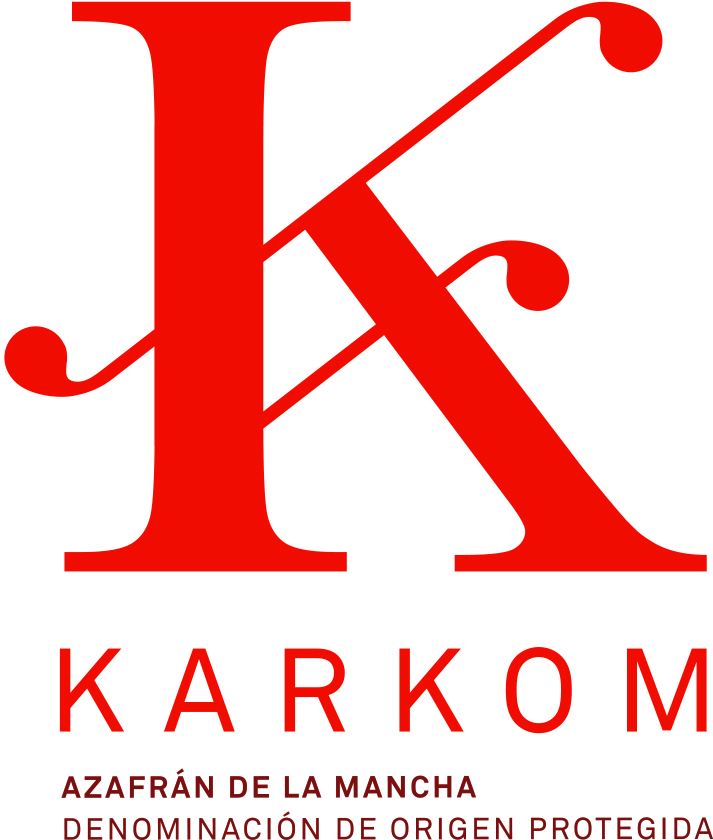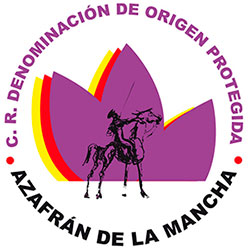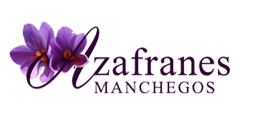
The saffron of La Mancha, classified as the best in the world , soley cultivated in the region of Castilla La Mancha in the areas of Albacete, Toledo, Cuenca and Ciudad Real.
In 1998 Azafranes Manchegos , with the intention of guaranteeing the production and defending the quality of Saffron in the whole world, entered to form a part as a charter member of the Regulatory Advice (Council) of the D.O. Saffron of La Mancha. In which our saffron can be found with the name of origin under the brand (trademark) KARKOM.

The Saffron from La Mancha with Protected designation of origin is characterized for it´s high power colouring (it is necessary to emphasize that our Technical Specification of Quality demands a minimal power colouring of 200 units), has a strong and exotic aroma, as well as a lightly bitter flavour. It differs easily because of the unmistakeable red stigmas which clearly stand out from the flower and for the short style. These characteristics turn it into a magnificent flavouring capable of transmitting deep aromas, being an irreplaceable spice in numerous Spanish recipes, especially, in the cuisine of La Mancha , from the Middle Ages to the present day.
The Saffron from La Mancha with Protected designation of origin will always be from crop, the reason for this is that with passing of years it loses considerable amount of quality, presenting the consumer with only the fiber, never ground. The filaments will be flexible and resistant with a brilliant color of vivacious red stigmas. The slow toasting gives the product a better presence, an intense aroma, a high safranal content and colouring potencial. These physical, chemical characteristics and organoleptics are the result of the natural process, the conditions of typical cultivation and of the processes of elaboration from the lands of La Mancha.
In the first third of the 19th century La Mancha was producing the best quality saffron in Spain, with major yields being reached for each hectare of dry farming. But the best proof of the existence of a strong historical link to the cultivation in the region of La Mancha is in the multiple cultural manifestations that are traditional with this area. The tradition of saffron cultivation in La Mancha is also present within the typical folklore of the region, of which a dance which is dedicated to this product, in songs and sayings, and is the story and setting for the opera that goes by the title " The rose of the saffron ".
Finally, as proof of the significance to the traditional character and of the economic importance of this culture, it is necessary to mention the custom, that survives to this day with some of the peoples and villages of La Mancha, of giving a few filaments of saffron to couples as a symbol and wish for prosperity.
Elements of labeling linked to the protected name of origin
On all the labels the logo of the name will appear " Protected designation of origin Saffron of La Mancha ".
The packings will be provided with a binding guarantee, labels or numbered counter labels facilitated by the Organization of Control, so that a new utilization is not possible. This numbered label will show and guarantee that the saffron will fulfill the requirements established in the Schedule of conditions of the Foundation.


